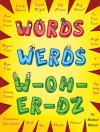‘If you teach middle school math and have wanted to promote social justice, but haven’t been sure how to get started, you need to check out this book. It incorporates lessons you can use immediately as well as how to foster the kind of classroom community where students will thrive. It’s the kind of book you’ll want to have alongside you to support you throughout your journey.’
Robert Kaplinsky
Author and Consultant
Long Beach, CA
Empower young adolescents to be the change—join the teaching mathematics for social justice movement!
Students of all ages and intersecting identities—through media and their lived experiences— bear witness to and experience social injustices and movements around the world for greater justice. However, when people think of social justice, mathematics rarely comes to mind. With a user-friendly design, this book brings middle school mathematics content to life by connecting it to issues students see or experience.
Developed for use by Grades 6-8 educators, the contributed model lessons in this book walk teachers through the process of applying critical frameworks to instruction, using standards-based mathematics to explore, understand, and respond to social injustices. Learn to plan daily instruction that engages young adolescents in mathematics explorations through age-appropriate, culturally relevant topics such as health and economic inequality, human and civil rights, environmental justice, and accessibility. Features include:
- Content cross-referenced by mathematical concept and social issues
- Connection to Learning for Justice’s social justice standards
- Downloadable teacher materials and lesson resources
- Guidance for lessons driven by young adolescents’ unique passions and challenges
- Connections between research and practice
Written for teachers committed to developing equitable and empowering practices through the lens of mathematics content and practice standards as well as social justice standards, this book will help connect content to young adolescents’ daily lives, strengthen their mathematical understanding, and expose them to issues that will support them in becoming active agents of change and responsible leaders.
Mục lục
Preface
Introduction
Chapter 1: What Is Social Justice and Why Does It Matter in Teaching Mathematics?
Chapter 2: Building and Sustaining a Beloved Community in the Middle School Mathematics Classroom
Chapter 3: Fostering a Classroom to Teach Mathematics for Social Justice
Chapter 4: Instructional Tools for the Social Justice Mathematics Lesson
Chapter 5: Teaching the Social Justice Mathematics Lesson
Chapter 6: The Number System
Lesson 6.1 Food Apartheid: Graphing and Understanding Access to Healthy Food
Lesson 6.2 Cor(o)ner Stores and Food Apartheid
Lesson 6.3 Billionaire Power
Lesson 6.4 Middle School Math to Explore People Represented in Our World and Community
Chapter 7: Ratios and Proportional Relationships
Lesson 7.1 Hey Google, Who′s a Mathematician
Lesson 7.2 The True Cost of that $29 T-shirt in the Store Window
Lesson 7.3 Majority and Power
Lesson 7.4 Smoking and Vaping: Targeting of Marginalized Communities by the Tobacco Industry
Lesson 7.5 Health Race and Ratios
Lesson 7.6 Health Inequalities: COVID and Other Health Conditions
Chapter 8: Algebra: Expressions, Equations, and Functions
Lesson 8.1 Gerrymandering of Voting Districts
Lesson 8.2 National Team Pay Investigation
Lesson 8.3 The Black Vote in America: Impact of the 1965 Voting Rights Act
Chapter 9: Statistics and Probability
Lesson 9.1 Playing with Data
Lesson 9.2 The Mathematics of Toxic Air
Lesson 9.3 Gender Pay Gap
Lesson 9.4 How Many Meals Can Minimum Wage Buy
Chapter 10: Geometry
Lesson 10.1 Map Projections
Lesson 10.2 3D Modeling for Water
Lesson 10.3 Water is Life
Lesson 10.4 Accessible Playground
Lesson 10.5 Investigating Areas to Determine Fairness
Chapter 11: Advice From the Field
Chapter 12: Creating Social Justice Mathematics Lessons for Your Own Classroom
Appendix A: Additional Resources
Appendix B: Lesson Resources
Appendix C: Essential Middle Grades Concepts
Appendix D: Social Justice Topics, Standards, and Grade Level Outcomes
Appendix E: Lessons by Essential Middle Grades Concepts, Social Justice Grades 6–8 Outcomes, and Social Justice Topics
Appendix F: Social Justice Mathematics Lesson Planner
References
Giới thiệu về tác giả
Eva Thanheiser is a mathematics teacher educator. She is a professor of mathematics education at Portland State University in Portland, Oregon. Eva teaches mathematics content courses for elementary and middle school teachers. She contextualizes much of the mathematics content in social and political contexts. She is the lead investigator on two National Science Foundation grants, one to connect elementary mathematics to the world and another focused on anti-bias mathematics education at the K–12 level. Eva started her studies in Germany and finished a master’s in mathematics in 1998 at Kansas University and a Ph D in mathematics education in 2005 at the joint doctoral program between the University of California San Diego and San Diego State University. Eva’s scholarship explores teaching mathematics for social justice and anti-bias mathematics education. Eva has received the Early Career Award from the Association of Mathematics Teacher Educators (AMTE) as well as the Sigma Xi Outstanding Researcher Award. She has served in leadership roles at AMTE and the Psychology of Mathematics Education– North America as well as on editorial boards of the Mathematics Teacher Educator and the Journal of Research in Mathematics Education.












